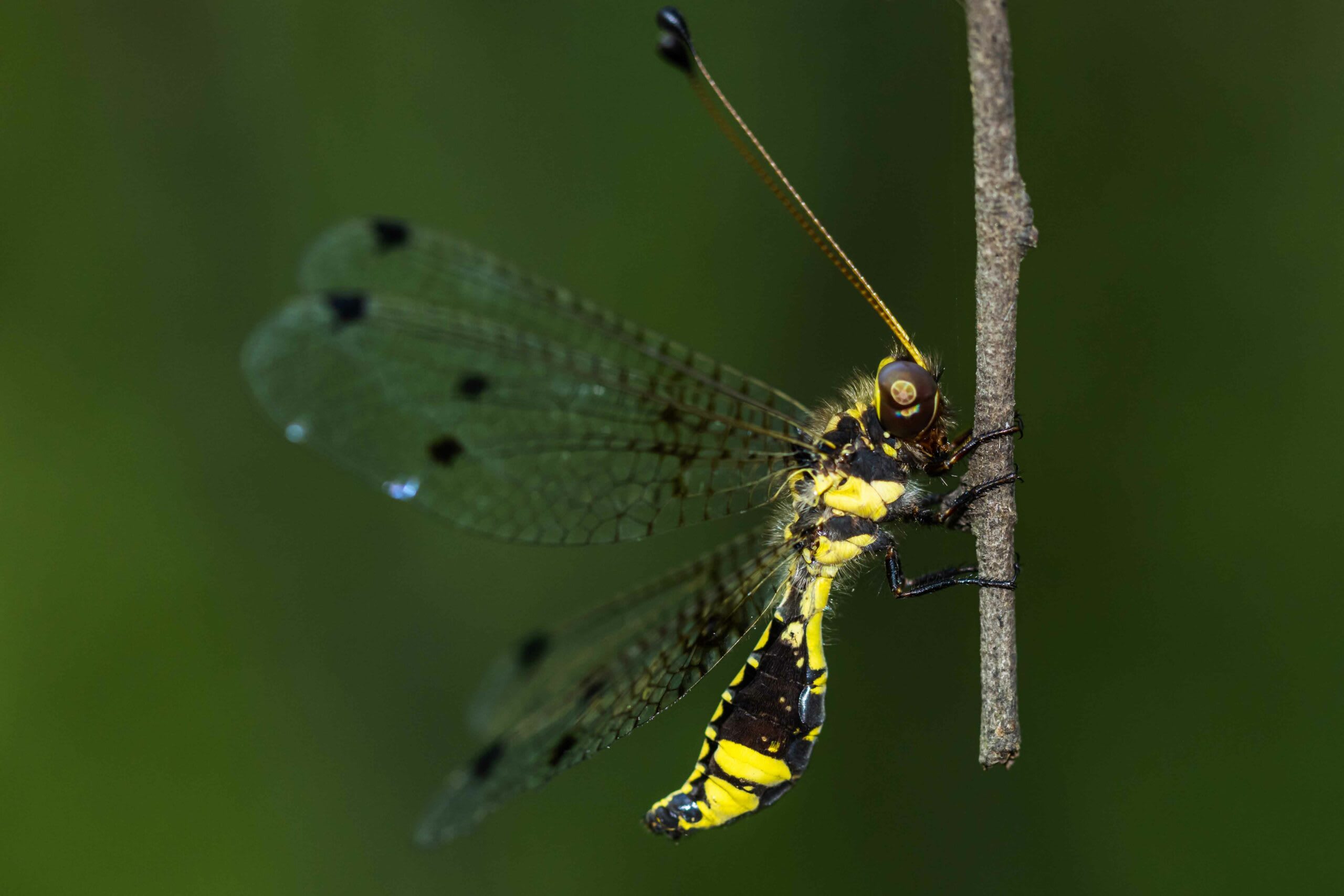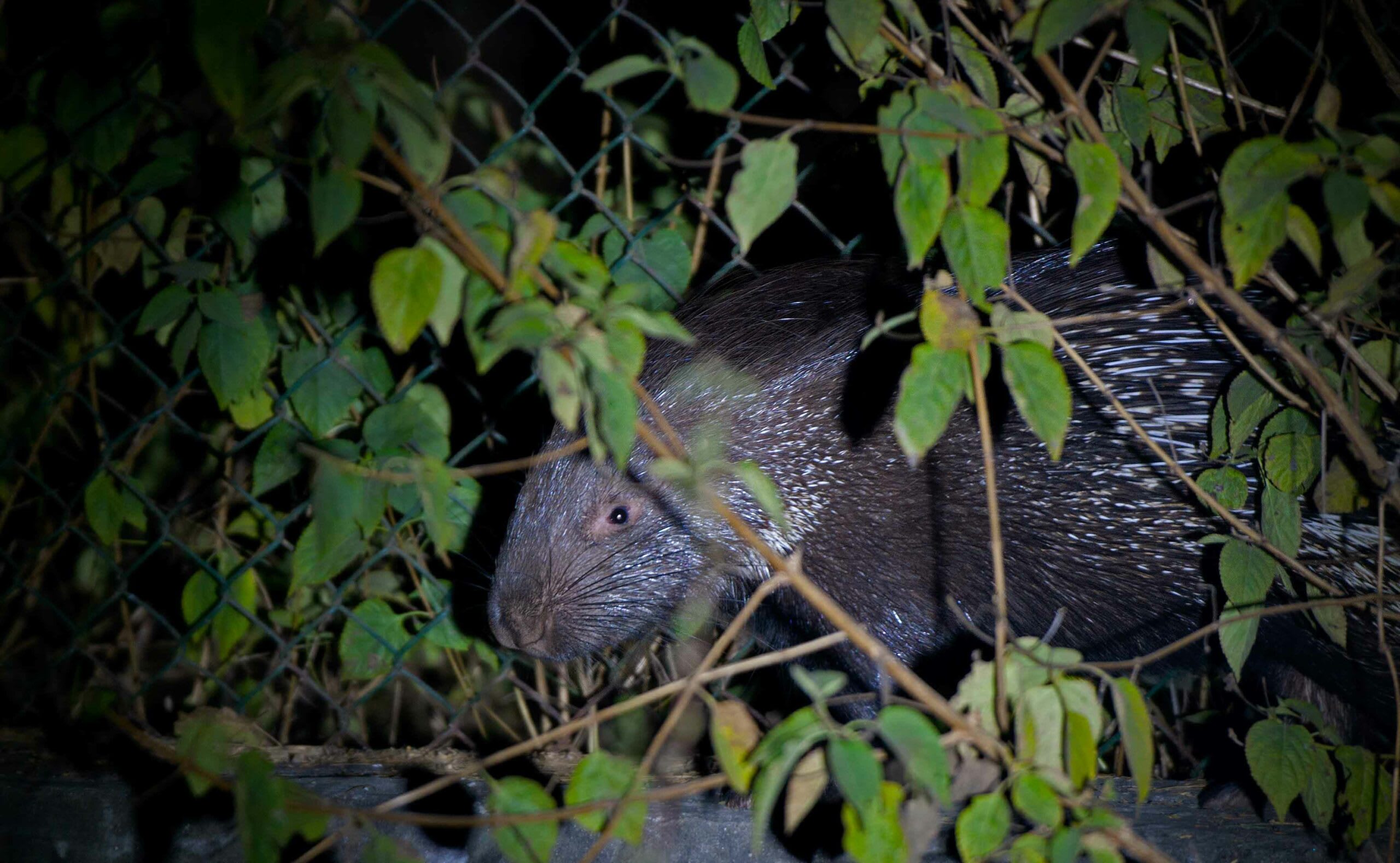In 2008, flights were delayed at New Delhi airport after monitor lizards and golden jackals strayed onto the runway after a heavy monsoon shower flooded the city. In 2016, a nilgai wandered on the lawns of Rashtrapati Bhavan, making headlines. In October 2021, a golden jackal was rescued from a water tank in Chhatarpur. At a glance, the nation’s capital seems like a modern metropolis, but occasionally, a leopard strays into a residential colony or a golden jackal shows up behind a cinema hall as a reminder that a fractured forest runs through this city’s heart.
Delhi-NCR sits on the Aravallis, the oldest mountain range in the country. The hills extend for over 800 km from Gujarat, through Rajasthan and Haryana, to Delhi. In the capital, exploited and ignored, its terrain drastically transforms. Playing peekaboo with the city, it emerges behind a mall, around a university, near an army training camp. Where it has been flattened, the neighbourhood names hold clues — Paharganj, Raisina Hills, Majnu ka Tila.
The Aravallis have a rich diversity of insects that attract scores of birds. One can spot several during a walk. Seen here are eggs of the lacewing fly (top), paper wasps with their intricate, papery nests (above left) and a congregation of jewel beetles on a ber tree (above right). Photos: Ashir Kumar (top and above left), Abhishek Gulshan (above right) Cover photo: The hilly terrain of the Aravallis has been flattened in many parts of the city. It is still visible in Sanjay Van, a protected area in South Delhi. Cover photo: Nitish Waila/Shutterstock
Known simply as The Ridge in Delhi, the Aravallis have evolved with the city over the years, mirroring its many changes. Its elevated terrain writes author Thomas Crowley in the Fractured Forest, Quartzite City: A History of Delhi and its Ridge, has attracted dynasties as a symbol of power. In the 14th century, Mughal Emperor Feroze Tughlaq afforested the former thorny scrub forest, turning it into his private hunting ground. The British used it as a base during the 1857 uprising. Soon after, when they moved the capital from Kolkata to Delhi, parts of it were tamed to create visually-pleasing lawns and gardens to provide a verdant backdrop to its administrative buildings. After partition, however, the southern end of the hills was cleared to make room for refugee colonies and other parts were leased for mining, leaving behind deep craters. Today, citizen groups and environmental activists are fighting to restore some of its last fragments, rewilding and protecting a disconnected patchwork of forests in the city.

The monsoon is a great time to spot curious insects in the Aravallis. (Top left) The robber fly, also called the assassin fly, hunts by injecting toxins into its prey. (Top right) A jumping spider devours a butterfly. (Above left) A bagworm moth larva builds a protective case from the materials available in its surroundings; this was built with twigs. (Above right) Stink bugs are known to release unpleasant odours when threatened. Photos: Abhishek Gulshan (top left and right and above left), Ashir Kumar (above right)
“The Aravallis are Delhi’s largest carbon sink,” says naturalist Abhishek Gulshan, who conducts walks around the landscape. “The native trees need little water, yet they support rich biodiversity. It is a self-sustaining ecosystem that delivers more than it demands,” he says.
Here’s a guide to some of the last remaining pockets of the Aravallis in Delhi-NCR.
Wildlife:
Mammals: The Aravallis are Delhi’s richest and most biodiverse urban habitat. A 2019 survey in the habitat by Centre for Ecology, Development and Research (CEDAR) and local activist Sunil Harsana recorded at least 15 species of mammals, including leopard, striped hyena, Indian fox, honey badger, ruddy mongoose, Indian bush rat, Indian crested porcupine. The hills also form a vital leopard corridor that extends until Sariska in Rajasthan.
The butterfly garden in Asola-Bhatti Wildlife Sanctuary bustles with activity. (Top) The chrysalis of a plain tiger. Unlike the colours of the chrysalis, the plain tiger butterfly is a vibrant orange with black and white edges. (Above left) A mottled emigrant butterfly caterpillar (above right) and hawkmoth butterfly caterpillar spotted in the garden. Photos: Abhishek Gulshan (top), Ashir Kumar (above)
Birds: The scrub forests host a variety of flycatchers and babblers. One can also spot sirkeer malkoha, white-eared bulbul, Indian eagle owl, rufous-fronted prinia, white-browed fantail, Eurasian wryneck, and white-capped bunting. The forested regions shelter yellow-crowned woodpeckers, small minivets, common woodshrikes, and more. During the monsoon, birdwatchers make a beeline to spot the Indian pitta that migrates to breed in Mangar Bani and Bhondsi.
Insects: The scrubs are also home to a range of butterflies. The Indian red flash, a scrub species, can be spotted in the Aravallis in Delhi-NCR. One is also likely to see lemon pansy, blue pansy, yellow pansy, striped and rounded pierrots, and other species.
(Top) An Indian red flash butterfly looks like a dry leaf when its wings are shut but flashes startling reds when it flaps. The bright colours warn predators of the toxic contents of its wings. (Above) A psyche butterfly is a restless creature, constantly fliting from one twig to another. Videos: Ashir Kumar.
Kamala Nehru Ridge, Civil Lines, Delhi
The 87-acre Kamala Nehru Ridge or the “Northern Ridge” runs around Delhi University, providing refuge for both wild creatures and forlorn lovers. During the 1857 uprising, the British used it as a vantage point to squash rebel attacks. Today, the part-manicured garden and part-forest is lined with landmarks of the revolt. The prominent Flagstaff tower that sheltered women and children of British officials is now occupied by parakeets, rock pigeons, squirrels, and civets. The Khooni jheel, a manmade pond that turned red with bloodshed during the battle, now hosts turtles and waterbirds.
Getting there: There are several entrances to the Northern Ridge. One is opposite the Vice Chancellor’s office within Delhi University, the other on Chauburja Marg.
Closest metro station: Vishawavidyalaya Metro Station and Civil Lines Metro Station
Timings: Open 24 hours

(Top left) The common banded awl is a swift flier that flutters around bushes in bright sunshine. If you are close enough, you’ll hear its wings whirring. (Top right) The yellow pansy butterfly roams in scrublands and grasslands. (Above) An owlfly is often mistaken for a dragonfly, but it can be distinguished by the way it folds its wings over its body while resting. This one was photographed in Mangar Bani. Photos: Abhishek Gulshan (top), Ashir Kumar (above)
Aravalli Biodiversity Park, Gurgaon
The 380-acre former mining site was a dead expanse of rock and gravel till the early 2000s. However, in 2011, the site went through a transformation thanks to ecologist Vijay Dhasmana and “I am Gurgaon”, a citizens group. For eight years, the group toiled to reintroduce native vegetation, recreating habitats typical of the northern Aravallis. Soon birds, insects and mammals arrived. In the last survey done in October 2018, the park recorded over 300 native plant species, 195 bird species, over 50 butterfly species and several reptiles and mammals.
Getting there: Mehrauli-Gurgaon Road, DLF Phase 3, Sector 24, Gurugram
Closest metro station: Guru Dronacharya Metro Station
Timings: 7 am to 6 pm
Trails: Ninox – Owl about Nature conducts regular trails here. Contact Abhishek Gulshan on 98705 75303 for details.

Several mammals and reptiles also live in the Aravallis around Delhi. (Top left) This saw-scaled viper, a small venomous snake, was spotted on a milkweed plant in Mangar Bani. (Top right) An Indian bush rat occupies arid and semi-arid regions where it forages on seeds, grains and grass. (Above) The Indian porcupine is a nocturnal creature that spends its day resting in burrows and crevices. This one was photographed during a night survey in Asola-Bhatti Wildlife Sanctuary. Photos: Abhishek Gulshan
Asola-Bhatti Wildlife Sanctuary, Faridabad
Until 2005, large stretches of the 6,874-acre sanctuary were red sand quarries. In 1991, after the death of a few labourers, the Delhi government shut it down and declared it part of the adjacent Asola Wildlife Sanctuary. It also entrusted the Bombay Natural History Society (BNHS) with the task of building a three-acre butterfly park. The sanctuary is part of the Sariska-Delhi leopard wildlife corridor, facilitating movement for Indian leopards, blackbucks, nilgais, and jackals. Many of the former mining pits have turned into lakes that host resident and migratory birds.
Getting there: The entrance to the park is near the Karni Singh Shooting Range on Surajkund Road.
Closest Metro Station: Tughlakabad Metro Station
Timings: Open weekdays, 9 am to 5 pm
Trails: CEC-BNHS conducts regular nature trails and butterfly walks. These trails are the best introduction to the park. Follow them on their social media handle for their latest programmes.
(Top left) Usually spotted in Mangar Bani, the Indian pitta breeds in the Aravallis during the monsoon. (Top right) The rufous-fronted prinia is a sprightly, social bird that lives in scrublands. (Above left) Look for the resident orange-headed thrush near streams and swampy areas in the Aravallis. (Above right) Because of its bright-red beak, the sirkeer malkoha is called the lipstick bird. It’s seen in woodland and scrub habitats. Photos: Abhishek Gulshan
Mangar Bani, Mangar
The Mangar Bani landscape is perhaps the most undisturbed patch of the original tropical scrub and dry deciduous forest. This is partly because Mangar Bani is considered a sacred grove and shelters the Gudariya Das Baba temple. According to local legend, the deity punishes those who harm the forest. This majestic landscape is where the hilly terrain of the Aravallis is most visible — deep valleys with rising brown boulders and native scrub of dhau, ber, and khejri run across the landscape. Unlike the cemented trails of the Northern Ridge, visitors must navigate muddy trails to spot eagle owls, reptiles, butterflies, and birds.
Getting there: Turn off on the Faridabad-Gurgaon highway to a road towards the Mangar Police Chowki.
Trails: Mangar Bani is not a designated protected area and is best explored on a guided tour. Ninox – Owl about Nature conducts regular trails. Contact Abhishek Gulshan on 98705 75303 for details.

(Top) Mangar Bani has a rich, mixed habitat with scrublands and areas forested by canopy trees. However, its most striking feature is the bare, brown boulders. (Above) Sanjay Van, in the Southern Ridge of Delhi, is a lush habitat that has unfortunately been taken over by the invasive vilayati keekar (Prosopis juliflora) . Photos: Abhishek Gulshan (top), Ashir Kumar (above)
Sanjay Van
Part of the Southern Ridge, the 443-acre Sanjay Van is accessible from the city. The forest is a part of a former continuous stretch of forest that included Aravalli Biodiversity Park, the Jawaharlal Nehru Campus, and present-day Sanjay Van. The terrain hosts a range of butterflies, birds, reptiles, and mammals like golden jackals and nilgais.
Getting there: There are multiple entry points to Sanjay Van, but the one near Qutub Institutional Area has the easiest access.
Closest Metro Station: Qutub Minar Metro Station.
Trails: Kush Sethi organises several themed trails around Sanjay Van. A trail on moonlit nights focuses on the acoustics of the forest. Another walk observes the changing landscape with every new season. “Narrative Art Edition” combines comic and collage making inspired by the forest as a part of the walk. Contact him at kushsethi16@gmail.com/9871755249 for details.
